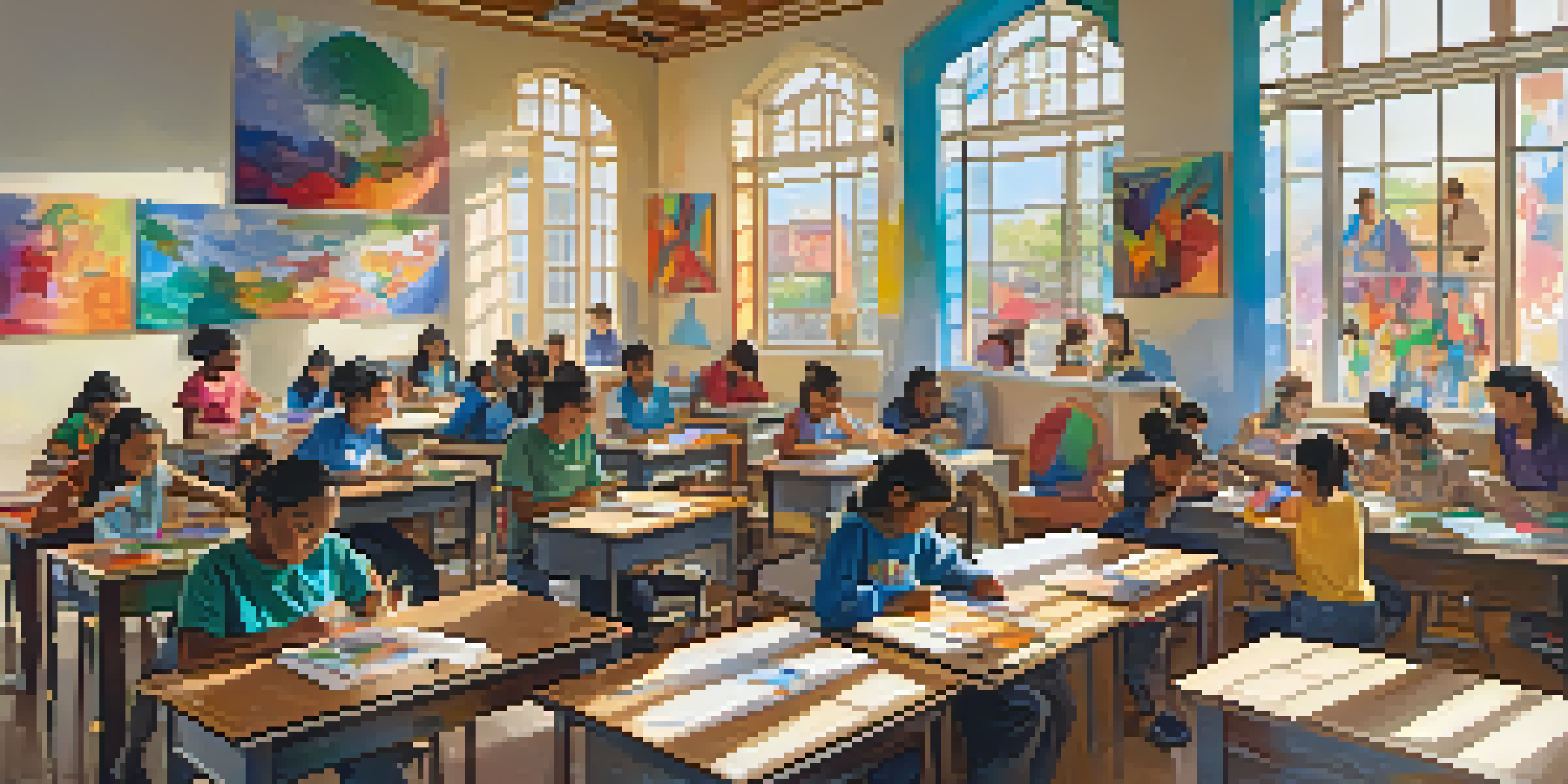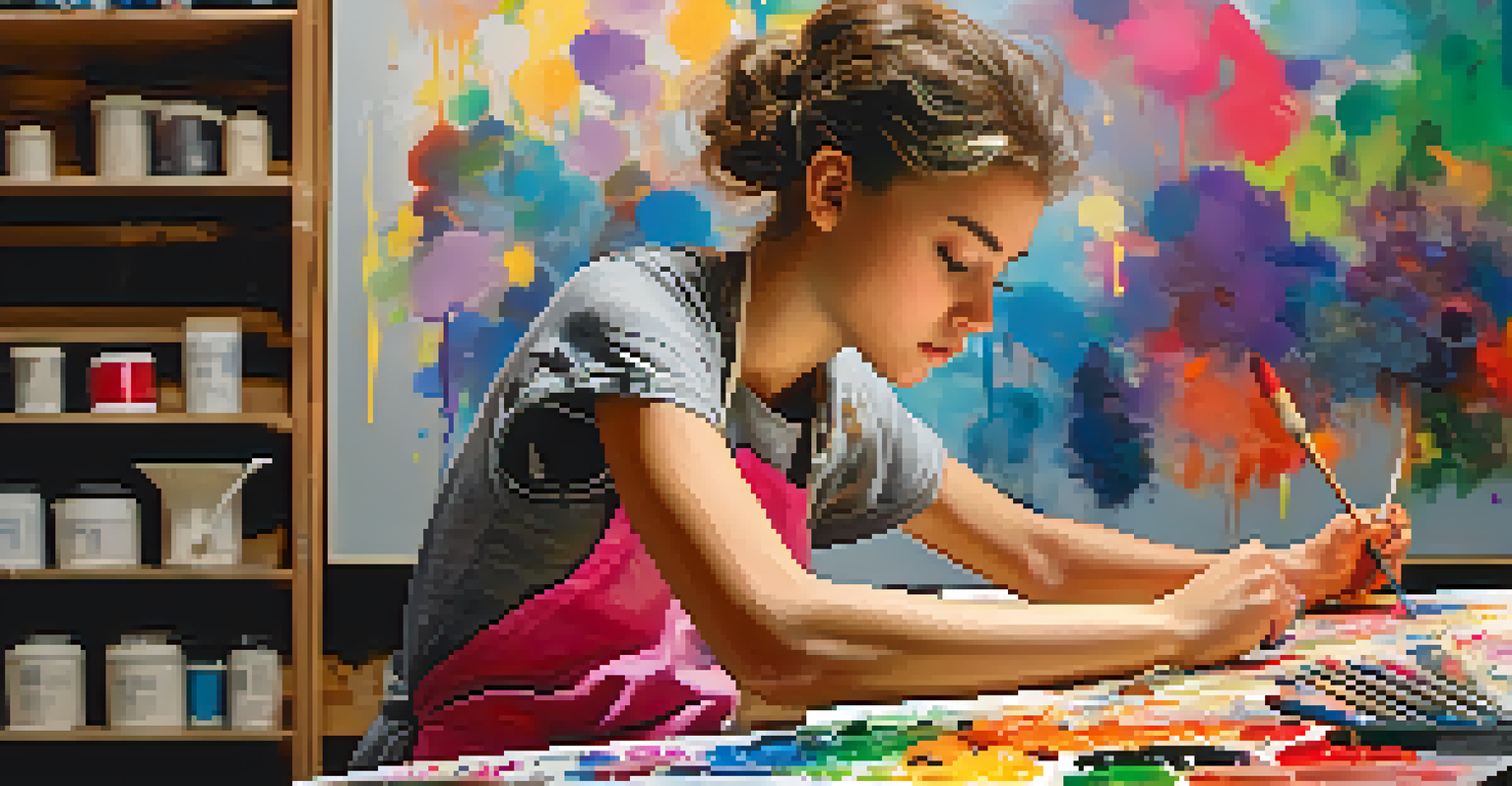Art Education as a Tool for Personal Expression in Youth

The Importance of Art Education in Youth Development
Art education plays a crucial role in the overall development of youth. It not only enhances creativity but also fosters critical thinking skills. Through various art forms, young people learn to interpret the world around them, making sense of their emotions and experiences.
Every artist was first an amateur.
Moreover, engaging in artistic activities allows youth to express themselves in ways that words sometimes cannot capture. This freedom of expression can be especially beneficial during the tumultuous teenage years, where individuals often grapple with identity and self-worth.
As they navigate their emotions through art, young people gain confidence and a sense of belonging. This empowerment is vital for their mental health and can lead to more positive interactions in their everyday lives.
Art as a Medium for Self-Discovery
Art serves as a powerful medium for self-discovery among youth. When they engage in creating art, they embark on a journey to explore their thoughts, feelings, and beliefs. This exploration can reveal hidden aspects of their personality, leading to greater self-awareness.

For example, a young person might find solace in painting after a difficult day, channeling their frustration onto the canvas. In this way, art becomes a safe space for them to confront and process their emotions.
Art Education Boosts Self-Expression
Engaging in art allows youth to express emotions and explore their identities in a meaningful way.
Through various artistic disciplines—be it painting, music, or theater—youth can experiment with different aspects of themselves. This not only enhances their creativity but also helps them come to terms with their identity.
Building Communication Skills Through Art
Art education can significantly enhance communication skills in young individuals. When students create art, they learn to articulate their ideas and feelings visually. This process encourages them to think critically about how to convey messages effectively.
Art enables us to find ourselves and lose ourselves at the same time.
For instance, a student might use storytelling through visual arts or drama to express complex emotions. This practice helps them understand the nuances of communication, such as tone, context, and audience engagement.
As they share their artwork with peers or audiences, they develop public speaking and presentation skills. These experiences not only build confidence but also foster connections with others, creating a supportive community.
The Therapeutic Benefits of Art Education
Art can be a therapeutic outlet for youth, providing a way to cope with stress and anxiety. Engaging in creative activities allows them to unwind and focus their minds away from everyday pressures. This can be particularly valuable in today’s fast-paced world.
For example, a teenager may find relief in sculpting or drawing, using the process to navigate feelings of sadness or frustration. The act of creation can serve as a form of emotional release, promoting mental well-being.
Enhances Communication Skills
Through creating and sharing art, young individuals improve their ability to articulate ideas and connect with others.
Furthermore, art education often encourages mindfulness, helping students to be present in the moment. This practice can lead to improved emotional regulation and resilience, essential skills for facing life's challenges.
Fostering Empathy and Cultural Awareness
Art education fosters empathy and cultural awareness in youth by exposing them to diverse perspectives. Through studying different artistic traditions, students learn to appreciate the richness of various cultures. This understanding promotes acceptance and inclusivity.
For instance, a class project might involve exploring art from different countries, allowing students to see the world through others' eyes. This experience can challenge stereotypes and encourage open-mindedness.
By engaging in collaborative art projects, youth also learn the importance of teamwork and respecting differing viewpoints. This nurtures empathy, as they begin to understand the stories and emotions behind the art created by their peers.
Encouraging Innovation and Problem-Solving Skills
Art education encourages youth to think outside the box, fostering innovation and problem-solving skills. When students are tasked with creating their own projects, they must navigate challenges and develop creative solutions. This process mirrors real-world problem-solving.
For example, a student might face obstacles in executing their artistic vision, prompting them to rethink their approach and adapt. This adaptability is a crucial life skill, applicable in various areas beyond art.
Fosters Empathy and Innovation
Art education cultivates empathy by exposing youth to diverse perspectives while encouraging innovative problem-solving skills.
Moreover, the freedom to experiment in art education nurtures a mindset of exploration. Youth learn that failure is a part of the creative process, which can ultimately lead to groundbreaking ideas and discoveries.
Conclusion: The Lasting Impact of Art Education
In conclusion, art education serves as a vital tool for personal expression among youth. It empowers them to explore their identities, communicate effectively, and develop resilience. The benefits extend far beyond the classroom, impacting their overall development and future opportunities.
As we continue to advocate for the importance of arts in education, it's essential to recognize the profound impact it has on young lives. Investing in art programs can cultivate a generation of creative, empathetic, and innovative thinkers.

Ultimately, art education is not just about creating; it's about nurturing individuals who understand the value of self-expression and the beauty of diversity in our world.